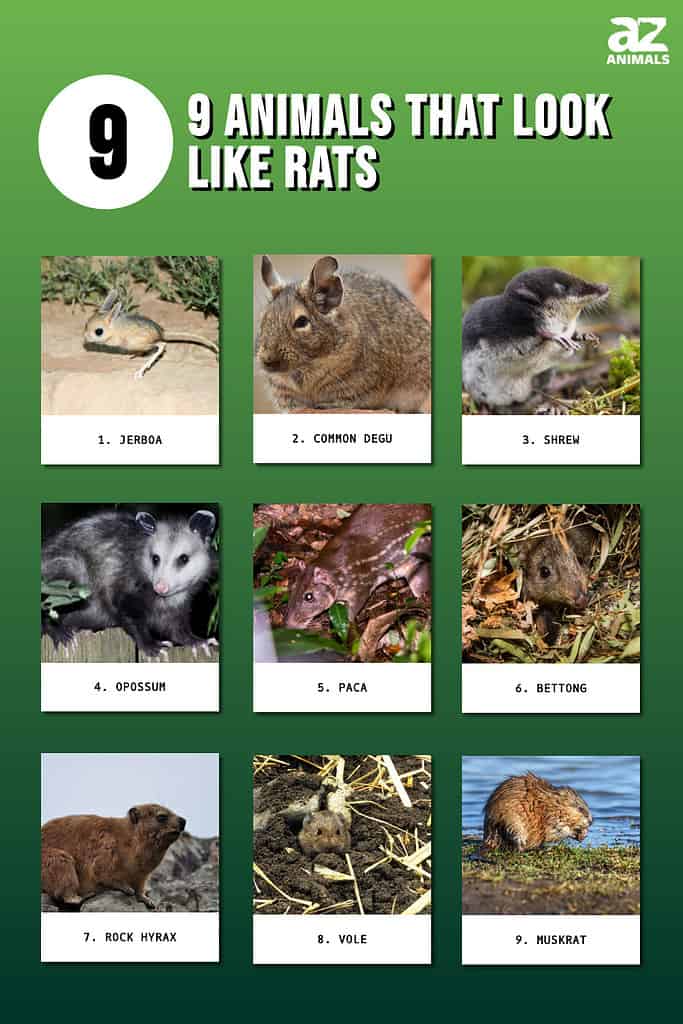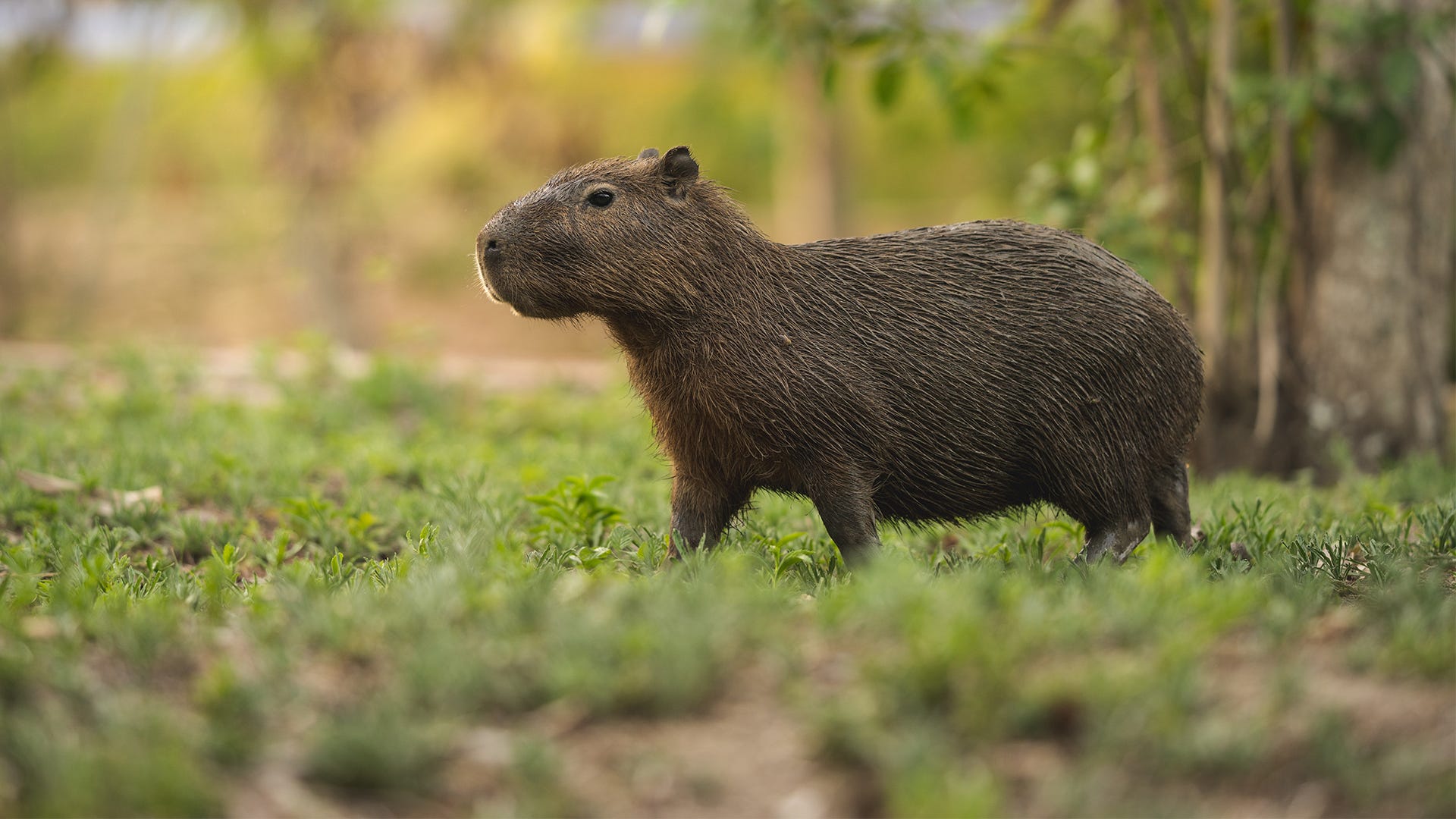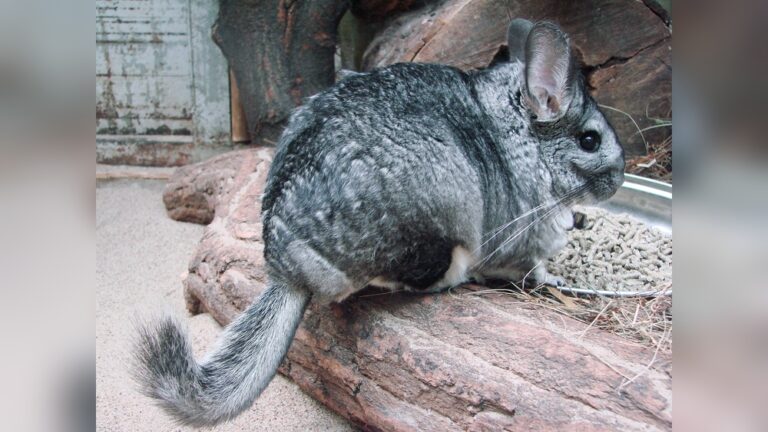Animal That Looks Like A Rat But Bigger: Discover The Surprising Creature!
Have you ever spotted an animal that looks like a rat but is much bigger and wondered what it could be? You’re not alone.
Many people get curious when they see these creatures scurrying around, unsure if they’re dealing with a giant rat or something entirely different. You’ll discover surprising facts about these animals, learn how to tell them apart from ordinary rats, and find out why they matter to your environment.
Keep reading—you’ll be amazed by what you’ll uncover!

Credit: a-z-animals.com
Common Misconceptions
Many people confuse larger rodents with rats because of their similar appearance. This causes misunderstandings about their behavior and impact on the environment. Clearing up these misconceptions helps us appreciate the differences between these animals. It also promotes better care and safety around them.
Rats Vs Larger Rodents
Rats are small, fast, and usually found near humans. Larger rodents, like capybaras or nutria, can be much bigger. They often live in wild areas or near water. Rats rarely grow bigger than a foot, but larger rodents can be several feet long. Their diet and habits also differ. Larger rodents eat more plants and live in groups. Rats tend to be scavengers and more solitary.
Identifying Features
Rats have slender bodies, long tails, and sharp faces. Larger rodents often have rounder bodies and shorter tails. Their fur can be thicker or coarser. Some have webbed feet or other unique traits. Size is a clear sign, but features like ear shape and nose length help too. Paying attention to these details avoids mixing them up. It also helps in understanding their roles in nature.
Meet The Capybara
The capybara is the largest rodent in the world. It looks like a giant rat but is much bigger and friendlier. Native to South America, this animal has unique traits that make it stand out. Many people find the capybara fascinating because of its gentle nature and unusual size. Let’s explore what makes this animal special.
Physical Characteristics
Capybaras have a sturdy, barrel-shaped body. They can grow up to 4 feet long and weigh about 100 pounds. Their fur is coarse and brownish, helping them blend into wetland areas. They have small ears and eyes placed high on their head. This helps them see and hear while swimming. Their feet are partially webbed, making them excellent swimmers.
Habitat And Range
Capybaras live mainly in South American wetlands. They prefer areas near rivers, lakes, and swamps. Countries like Brazil, Venezuela, and Argentina are home to many capybaras. They need water to survive and stay cool. The wet and warm climate suits their lifestyle perfectly.
Behavior And Social Life
Capybaras are social animals and live in groups of 10 to 20. They communicate through whistles, barks, and purrs. These sounds help keep the group together and warn of danger. They spend a lot of time swimming and resting near water. Capybaras graze on grass and plants, often feeding together peacefully.
Other Large Rodent Lookalikes
Many animals look like rats but are much bigger. These large rodents share some features with rats but live different lives. They can be found in various parts of the world. Some live in water, while others prefer forests or fields.
Understanding these animals helps us see how diverse rodents can be. Here are some large rodent lookalikes that often confuse people.
Nutria: The Semi-aquatic Rodent
Nutria, also called coypu, live near water. They have webbed feet to swim well. Their fur is brown and thick to keep warm. Nutria eat plants and can damage crops. They are larger than normal rats but not as big as beavers. Nutria make their homes in burrows near rivers and lakes.
Coypu Characteristics
Coypus have long whiskers and large front teeth. Their tails are long and scaly, unlike beavers’ flat tails. They weigh up to 20 pounds and reach about 2 feet long. Coypus are mostly active at night. They can cause problems by digging holes in riverbanks. These rodents also spread seeds and help the environment.
Agouti And Their Differences
Agoutis look like big rats but have short tails. They live in forests and eat fruits and nuts. Agoutis have smooth fur and sharp claws. They are smaller than coypus but bigger than common rats. Unlike coypus, agoutis do not live in water. They help grow trees by burying seeds in the ground.
Ecological Role And Impact
Animals that look like rats but are bigger play important roles in their ecosystems. These creatures help keep nature balanced. Their actions affect plants, animals, and even soil health. Understanding their ecological role shows why they matter beyond their odd appearance.
Environmental Contributions
These large rat-like animals spread seeds as they move. This helps plants grow in new areas. They dig in the ground, which improves soil air and water flow. Their burrows provide homes for other small animals. They also serve as food for larger predators. This keeps the food chain strong and healthy.
Human Interaction And Challenges
Humans often see these animals as pests. They may damage crops or property. This causes conflicts in farming areas. People sometimes try to control their numbers with traps or poisons. This harms the environment and other wildlife. Educating about their benefits can reduce fear and harm. Finding ways to live together is important for nature and people.
How To Identify These Creatures
Identifying animals that look like rats but are bigger can be tricky. These creatures share many features with rats but have distinct traits. Knowing how to spot these differences helps you understand what animal you are dealing with.
Key Physical Traits
These animals usually have larger bodies than common rats. Their heads might be broader and eyes smaller. The tail can be shorter or thicker. Fur texture varies, sometimes coarse or thick. Some have unique colors like gray, brown, or black. Look for strong claws and bigger feet. These traits help tell them apart from normal rats.
Common Habitats
They often live in forests, fields, or near water. Some prefer dense bushes or underground burrows. Others are found near human homes, but not inside. They need places with food and shelter. Wetlands and riverbanks are common spots. Their habitat choice depends on species and climate.
Behavioral Clues
These creatures move slower than typical rats. They may be less noisy and less aggressive. Some are active during the day, unlike rats. Watch how they search for food. They often eat plants, insects, or small animals. Their social behavior can differ too. Some live alone, others in small groups.

Credit: www.victorpest.com

Credit: www.smcmvcd.org
How Smart Pets Lover Can Help You with Animal That Looks Like A Rat But Bigger
Learning from Larger Rodents: Practical Insights for Curious Pet Lovers
Encountering an animal that looks like a rat but bigger sparks natural curiosity—and that’s a wonderful gateway to deeper learning. As we’ve explored common misconceptions and met fascinating creatures like the capybara, it’s clear these animals offer more than just surprising appearances. Observing their ecological role helps us appreciate how they fit into broader ecosystems, and understanding how to identify them correctly prevents confusion with less friendly rodents.
For pet parents and animal lovers, this knowledge can inspire thoughtful conversations about habitat, behavior, and even responsible pet ownership. At Smart Pets Lover, we believe every discovery strengthens the bond between humans and animals—encouraging empathy and respect. If you want to dive deeper or have questions about these unique rodents or others, reaching out to local wildlife organizations or your nearest vet can be a helpful next step. Learning about these creatures enriches our appreciation for nature’s diverse stories—where every wag, purr, and chirp truly tells a story.
Frequently Asked Questions
What Animal Looks Like A Rat But Is Bigger?
The animal is called a capybara. It is the largest rodent in the world. Capybaras look like giant rats but are peaceful and semi-aquatic.
Where Can You Find Animals That Look Like Big Rats?
Big rat-like animals, such as capybaras, live in South America. They inhabit wetlands, rivers, and forests. Some species also live in Asia and Africa.
Are Bigger Rat-like Animals Dangerous To Humans?
Most large rat-like animals, including capybaras, are not dangerous. They are shy and avoid humans. However, wild animals should be respected and observed from a distance.
How Can You Tell A Capybara From A Giant Rat?
Capybaras have a larger, more rounded body and shorter legs. Their fur is coarse and brownish, unlike typical rats. They also have webbed feet for swimming.
Conclusion
Animals that look like rats but are bigger can surprise many people. These creatures live in different places worldwide. They have unique habits and roles in nature. Understanding them helps us respect wildlife more. Next time you see a large rat-like animal, remember its special place.
Nature is full of wonders waiting to be explored. Stay curious and keep learning about these fascinating animals.





